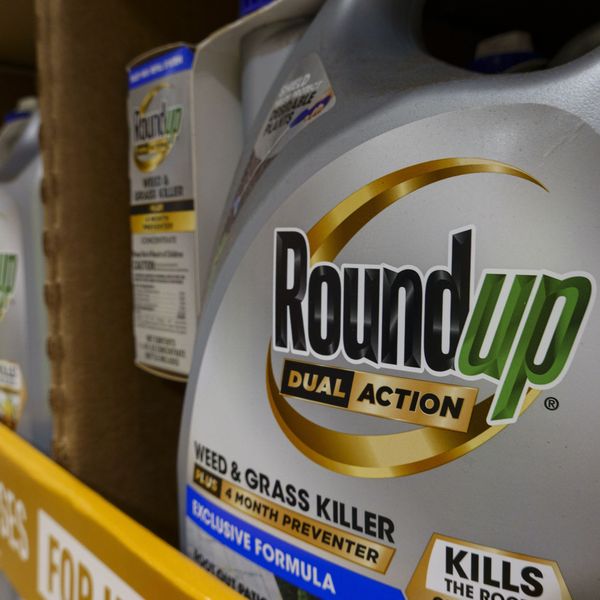New Dust Bowl?
Extreme heat, drought leave parched fields, desperate farmers in Midwest
As record temperatures and drought leave corn fields parched in the Midwest, some farmers fear a new Dust Bowl is lurking, the New York Times reports.
The Times notes that that acreage of corn planted this year was the highest in 75 years, and warm spring temperatures had allowed earlier planting and had risen farmers' hopes of high returns.
But Illinois farmer Don Duvall told the Times, "It all quickly went from ideal to tragic."
The ongoing heat and lack of rainfall have left corn crops in some midwestern states far smaller than usual for this time of year, if not clinging to life. And with the pollination time for the crop soon approaching, the viability of much of the corn to survive is chancy, as stressed crops may not pollinate.
The Times ends with an eerie image of a farmer picking up his soil which turns to "a dusty powder."
The Dust Bowl that struck the Plains in the 1930s as a result of heat, drought and ecologically devastating agricultural practices left highly eroded lands and hundreds of thousands of people displaced. With the ongoing extreme temperatures as well as a lack of widespread agroecological approaches, a new dust bowl may indeed be upon us.

* * *
\u201cSt. Louis has just reached 100 degrees for the 7th day in a row - ties 1953 for the longest streak since the Dust Bowl! #Heat #mowx\u201d— The Weather Channel (@The Weather Channel) 1341421851
* * *
\u201cThe past 4 days in Lexington: 102, 102, 103 and 103. We are witnessing history. Only the dust bowl year of 1936 tops this run of heat. #kywx\u201d— Chris Bailey (@Chris Bailey) 1341176593
* * *
\u201cMassive "debilitating" heat wave expands East, Dust Bowl-era records already falling https://t.co/dU7YFJll #heatwave #climate\u201d— Climate Central (@Climate Central) 1340899150
* * *
\u201cDust Bowl era heat records starting to tumble across the Plains https://t.co/piWBQObV\u201d— Bill McKibben (@Bill McKibben) 1340827291
* * *
Stinging Dust & Forgotten Lives: The Dust Bowl
Copyright 2008 by Cameron Douglas Craig and Kevin Harker Jeanes
An Urgent Message From Our Co-Founder
Dear Common Dreams reader, The U.S. is on a fast track to authoritarianism like nothing I've ever seen. Meanwhile, corporate news outlets are utterly capitulating to Trump, twisting their coverage to avoid drawing his ire while lining up to stuff cash in his pockets. That's why I believe that Common Dreams is doing the best and most consequential reporting that we've ever done. Our small but mighty team is a progressive reporting powerhouse, covering the news every day that the corporate media never will. Our mission has always been simple: To inform. To inspire. And to ignite change for the common good. Now here's the key piece that I want all our readers to understand: None of this would be possible without your financial support. That's not just some fundraising cliche. It's the absolute and literal truth. We don't accept corporate advertising and never will. We don't have a paywall because we don't think people should be blocked from critical news based on their ability to pay. Everything we do is funded by the donations of readers like you. Will you donate now to help power the nonprofit, independent reporting of Common Dreams? Thank you for being a vital member of our community. Together, we can keep independent journalism alive when it’s needed most. - Craig Brown, Co-founder |
As record temperatures and drought leave corn fields parched in the Midwest, some farmers fear a new Dust Bowl is lurking, the New York Times reports.
The Times notes that that acreage of corn planted this year was the highest in 75 years, and warm spring temperatures had allowed earlier planting and had risen farmers' hopes of high returns.
But Illinois farmer Don Duvall told the Times, "It all quickly went from ideal to tragic."
The ongoing heat and lack of rainfall have left corn crops in some midwestern states far smaller than usual for this time of year, if not clinging to life. And with the pollination time for the crop soon approaching, the viability of much of the corn to survive is chancy, as stressed crops may not pollinate.
The Times ends with an eerie image of a farmer picking up his soil which turns to "a dusty powder."
The Dust Bowl that struck the Plains in the 1930s as a result of heat, drought and ecologically devastating agricultural practices left highly eroded lands and hundreds of thousands of people displaced. With the ongoing extreme temperatures as well as a lack of widespread agroecological approaches, a new dust bowl may indeed be upon us.

* * *
\u201cSt. Louis has just reached 100 degrees for the 7th day in a row - ties 1953 for the longest streak since the Dust Bowl! #Heat #mowx\u201d— The Weather Channel (@The Weather Channel) 1341421851
* * *
\u201cThe past 4 days in Lexington: 102, 102, 103 and 103. We are witnessing history. Only the dust bowl year of 1936 tops this run of heat. #kywx\u201d— Chris Bailey (@Chris Bailey) 1341176593
* * *
\u201cMassive "debilitating" heat wave expands East, Dust Bowl-era records already falling https://t.co/dU7YFJll #heatwave #climate\u201d— Climate Central (@Climate Central) 1340899150
* * *
\u201cDust Bowl era heat records starting to tumble across the Plains https://t.co/piWBQObV\u201d— Bill McKibben (@Bill McKibben) 1340827291
* * *
Stinging Dust & Forgotten Lives: The Dust Bowl
Copyright 2008 by Cameron Douglas Craig and Kevin Harker Jeanes
As record temperatures and drought leave corn fields parched in the Midwest, some farmers fear a new Dust Bowl is lurking, the New York Times reports.
The Times notes that that acreage of corn planted this year was the highest in 75 years, and warm spring temperatures had allowed earlier planting and had risen farmers' hopes of high returns.
But Illinois farmer Don Duvall told the Times, "It all quickly went from ideal to tragic."
The ongoing heat and lack of rainfall have left corn crops in some midwestern states far smaller than usual for this time of year, if not clinging to life. And with the pollination time for the crop soon approaching, the viability of much of the corn to survive is chancy, as stressed crops may not pollinate.
The Times ends with an eerie image of a farmer picking up his soil which turns to "a dusty powder."
The Dust Bowl that struck the Plains in the 1930s as a result of heat, drought and ecologically devastating agricultural practices left highly eroded lands and hundreds of thousands of people displaced. With the ongoing extreme temperatures as well as a lack of widespread agroecological approaches, a new dust bowl may indeed be upon us.

* * *
\u201cSt. Louis has just reached 100 degrees for the 7th day in a row - ties 1953 for the longest streak since the Dust Bowl! #Heat #mowx\u201d— The Weather Channel (@The Weather Channel) 1341421851
* * *
\u201cThe past 4 days in Lexington: 102, 102, 103 and 103. We are witnessing history. Only the dust bowl year of 1936 tops this run of heat. #kywx\u201d— Chris Bailey (@Chris Bailey) 1341176593
* * *
\u201cMassive "debilitating" heat wave expands East, Dust Bowl-era records already falling https://t.co/dU7YFJll #heatwave #climate\u201d— Climate Central (@Climate Central) 1340899150
* * *
\u201cDust Bowl era heat records starting to tumble across the Plains https://t.co/piWBQObV\u201d— Bill McKibben (@Bill McKibben) 1340827291
* * *
Stinging Dust & Forgotten Lives: The Dust Bowl
Copyright 2008 by Cameron Douglas Craig and Kevin Harker Jeanes

